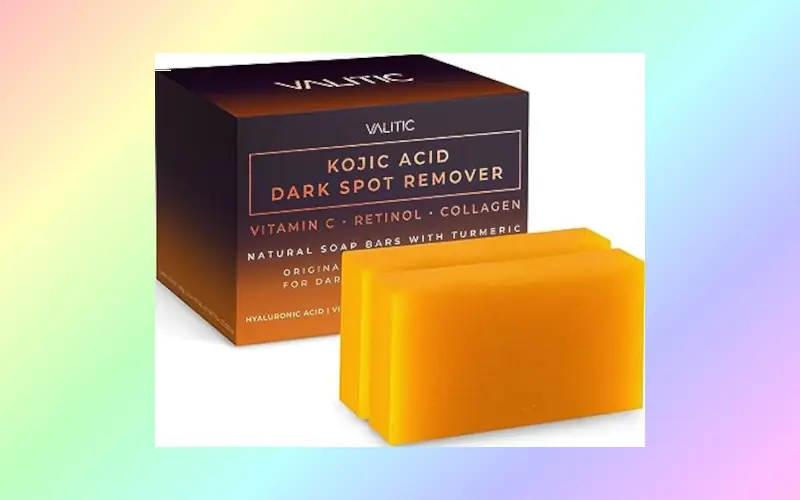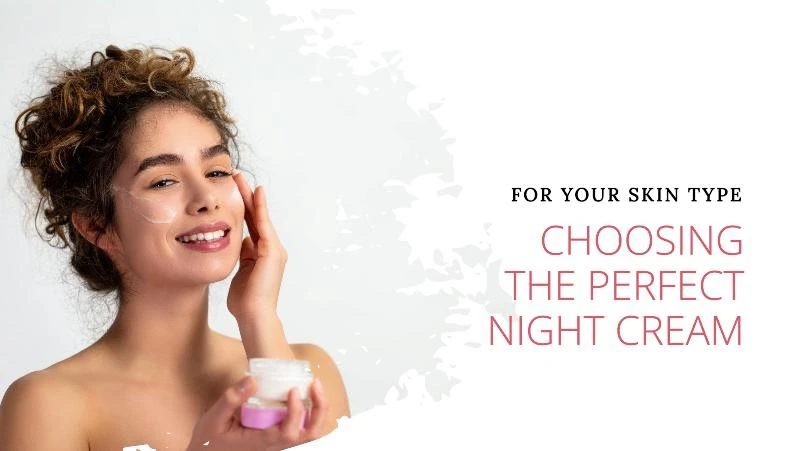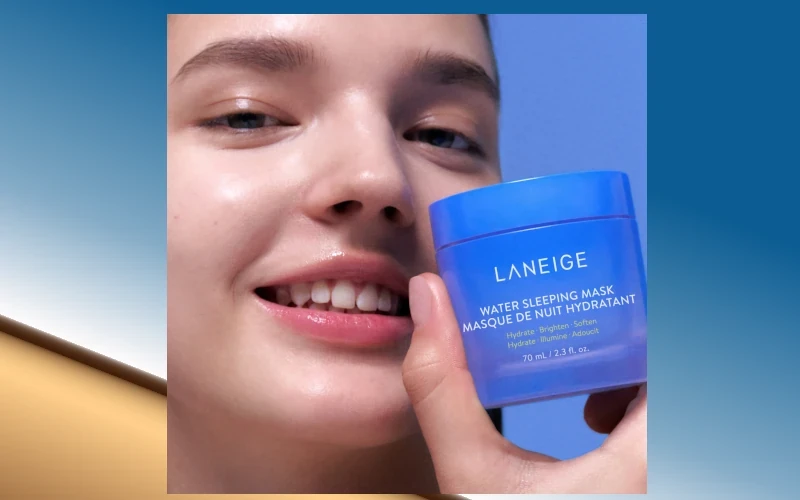From NASA to Your Bathroom: The Evolution of LED Light Therapy

Have you ever thought that technology developed for space exploration could end up helping your skin? While it might sound like science fiction, there’s some truth behind the connection, though the real story is more nuanced than often told. It is none other than NASA Red Light Therapy!
NASA did study LED technology, but primarily for growing plants in space and supporting astronaut health in microgravity. During the 1990s, researchers (including some funded by NASA) discovered that red and near-infrared light could aid tissue repair and reduce inflammation. This finding wasn’t entirely new—scientists had already been studying light therapy for decades—but space research helped advance its applications in unique environments.
While NASA’s work contributed to broader medical research, LEDLED light therapyr skincare was largely developed by dermatologists and cosmetic scientists, not space agencies. Today, thanks to ongoing studies in photobiomodulation (the science of how light affects cells), LED masks and devices have become popular for improving skin health—but their journey wasn’t a straight path from NASA labs to your bathroom.
So, while space research played a small role, the real credit goes to years of medical and cosmetic innovation. The next time you use an LED mask, remember: It’s less about astronauts and more about decades of Earth-bound science making skincare smarter!
The Space Problem That Sparked a Skincare Revolution

Imagine trying to grow a garden in space! NASA faced this challenge when planning for long-duration missions. The conventional Earth-based lights were too heavy, consumed too much power, and generated excessive heat. These factors would compromise the limited resources and delicate balance of a spacecraft’s environment. To overcome these hurdles, NASA explored the use of LED lights for plant growth. Their research demonstrated that LEDs, thanks to their energy efficiency and reduced heat emission, could be adapted to meet a space’s unique requirements. Although this work primarily focused on optimizing plant cultivation rather than human therapies, it provided valuable insights into LED light performance in challenging settings.
NASA’s Focus on Astronaut Health
Simultaneously, NASA prioritized astronaut health during extended missions. In the microgravity conditions of space, muscle and bone deterioration becomes a significant concern, and even minor injuries tend to heal more slowly. While the agency did not set out to create a medical therapy, its investigations into LED technology helped to illuminate the broader potential of specific light wavelengths.
From Plant Growth to Healing Human Tissue
Early experiments revealed that particular wavelengths, especially red and near-infrared light, could enhance photosynthesis in plants. Recognizing this, scientists in various fields began investigating how those same wavelengths might affect human tissue. Subsequent research demonstrated that red light therapy could penetrate the skin and underlying tissues, promoting cellular repair and reducing inflammation. This phenomenon, now known as photobiomodulation, has become a widely studied technique in the medical and cosmetic industries.
The Evolution of LED Light Therapy
It’s important to note that while NASA’s LED research provided valuable performance data, the development of LED light therapy for skin care and wellness was not a direct result of space missions. Instead, the evolution of this therapy is the result of cumulative efforts by scientists across multiple disciplines. NASA’s contributions acted as a catalyst, inspiring further research and technological advancements that led to the popular at-home LED light therapy devices we see today.
Proven Benefits of Red Light Therapy
Clinical studies have shown that red and near-infrared light therapy can:
- Promotes collagen production for smoother, more youthful skin
- Reduces inflammation and accelerates wound healing
- Improve circulation to enhance skin tone and texture
- Supports skin cell regeneration and minimizes fine lines and wrinkles
These benefits have contributed to the growing demand for LED light therapy devices available for home use.
If you’re interested in experiencing the bebenefits of LED light therapyt home, explore the latest in red light therapy devices and see how this innovative technology can enhance your skincare routine.
The NASA-LED Research Program

The exploration of LED light therapy owes much to NASA’s research efforts. A pivotal figure in this journey was Dr. Harry Whelan, a professor at the Medical College of Wisconsin, whose studies on the therapeutic effects of red and near-infrared LEDs received significant support from NASA grants and the National Institutes of Health (NIH). While NASA did not operate a specific entity called a “Space Medicine Laboratory,” its commitment to studying astronaut health drove groundbreaking research into the potential of LED therapy.
NASA’s research primarily addressed critical space health challenges, including immune deficiency, muscle and bone loss, and delayed wound healing experienced by astronauts in microgravity. As part of its innovative solutions, NASA-funded experiments demonstrated that red and near-infrared light could accelerate tissue repair, reduce inflammation, and enhance cell regeneration.
While LED light therapy wasn’t an accidental discovery, the application of LED technology for therapeutic purposes was a natural extension of its use in plant growth experiments. NASA scientists observed that specific wavelengths of red light effectively promoted photosynthesis in plants. Building on this, researchers began investigating how the same wavelengths could benefit human health. Controlled studies validated that LED light therapy could significantly improve the healing of oxygen-deprived wounds and stimulate the growth of skin, bone, and muscle cells.
NASA’s original LED arrays were designed for plant growth experiments, emphasizing energy efficiency and minimal heat output. Although exact technical specifications varied, the primary focus was on maximizing light absorption. The insights gained from these designs were later applied in medical research, leading to the development of specialized LED light therapy devices.
Results from NASA’s LED light therapy research were widely shared within the scientific community, contributing to numerous peer-reviewed publications and fostering advancements in both the medical and cosmetic fields. Technologies such as QDI’s HEALS (High Emissivity Aluminiferous Light-emitting Substrate), developed with NASA’s involvement, became a prominent example of how space-based research can translate into practical medical applications.
Through its dedication to scientific innovation, NASA’s contributions to LED therapy provided credibility and momentum for further exploration. The agency’s involvement played a crucial role in validating the therapeutic potential of LED light therapy, influencing its widespread adoption in the healthcare and skincare industries.
NASA RED Light Therapy Applications in Medicine

NASA’s pioneering LED research, originally aimed at improving plant growth in energy-efficient and low-heat environments, opened new doors for the development of LED light therapy. Through its robust technology transfer programs, NASA provided valuable data on optimal light wavelengths and design efficiency, extending the applications of LED technology beyond agricultural use into photobiomodulation therapies.
While NASA’s primary focus was environmental control and plant cultivation in microgravity, the discovery that specific wavelengths of red and near-infrared light promoted cellular repair and reduced inflammation became a critical turning point. Though not part of a dedicated NASA-led medical program, these findings sparked interdisciplinary studies merging space-inspired technology with medical research, advancing LED light therapy for human health.
A key collaboration between NASA and Quantum Devices Inc. (QDI) led to the adaptation of HEALS technology for medical applications. This technology, initially optimized for plant growth, was later explored for its potential in wound healing and muscle recovery. Experts like Dr. Harry Whelan at the Medical College of Wisconsin were instrumental in translating NASA’s research into clinical LED therapy devices.
These innovations paved the way for medical devices such as the WARP 10 LED unit, which achieved FDA clearance in 2003. Today, LED light therapy continues to evolve, with both in-hospital treatments and at-home LED devices offering relief for muscle pain, joint discomfort, and skin rejuvenation.
The Dermatological Discovery of LED Therapy
The potential of LED therapy for skin became evident when dermatologists first observed the benefits highlighted in NASA’s wound healing research. The understanding that light could stimulate cellular processes—such as tissue repair and regeneration—opened doors for LED skin therapy beyond its initial use in wound care. This breakthrough prompted pioneering dermatologists to explore how LED light therapy could address various skin concerns non-invasively.
Early Exploration of LED Therapy in Dermatology
As dermatologists began to realize the therapeutic benefits of light, they adapted NASA’s photobiomodulation protocols to suit cosmetic and dermatological applications. This involved adjusting wavelengths, intensity, and treatment durations to target aesthetic goals, including skin rejuvenation, acne treatment, and overall skin health. Early results from LED therapy for skin demonstrated significant improvements in wound healing, which laid the groundwork for addressing issues like scars and skin texture.
Key Benefits of LED Therapy for Skin
Clinical research revealed that LED light therapy was effective not only for wound healing but also for addressing fine lines, wrinkles, and other signs of aging. Over time, studies have documented improvements in skin softness, smoothness, and elasticity. Notably, red LED light therapy became well-known for its ability to stimulate collagen production, while blue light was found to be particularly effective in treating acne.
Specialized LED Therapy Protocols for Skin Concerns
As the field of dermatology advanced, dermatologists developed specialized protocols for treating various skin issues using LED therapy. Different wavelengths were employed to target specific concerns:
- Blue light for acne and bacteria reduction
- Red and near-infrared light for collagen stimulation, inflammation reduction, and skin rejuvenation
These advancements allowed for more personalized treatments, addressing a variety of skin health issues with precision.
Clinical Evidence Supporting LED Therapy
Numerous clinical trials have demonstrated the efficacy of LED therapy for a range of dermatological conditions. Research has shown that red LED light therapy can effectively shrink pores, lighten acne scars, and reduce dark spots. Additionally, LED skin therapy has been proven to brighten and plump the skin, making it a popular choice for individuals seeking non-invasive treatments to enhance their appearance.
Professional Aesthetic Application Development of LED Therapy

Following the groundbreaking medical research stemming from NASA’s work, the potential of LED therapy for aesthetic applications became increasingly evident to skincare professionals. First-generation professional aesthetic LED systems began to emerge, distinct from medical devices used by dermatologists. While both shared the core technology of photobiomodulation, aesthetic devices primarily targeted broader skin concerns, such as anti-aging, skin rejuvenation, and overall skin health rather than specific medical conditions.
Key Technical Differences Between Aesthetic and Medical LED Devices
LED therapy devices for aesthetic purposes differ technically from medical-grade units in several ways. These differences include variations in the number and density of LED bulbs, the range of wavelengths (with blue, red, and near-infrared being the most common), and typically lower power outputs compared to some medical-grade units. Aesthetic devices are optimized for frequent use in non-invasive treatments aimed at skin rejuvenation and anti-aging.
Development of LED Therapy Treatment Protocols for Aestheticians
As LED therapy became more widely adopted in the aesthetic industry, professionals developed specific treatment protocols for aesthetic LED systems. These protocols established guidelines for treatment durations, frequencies, and recommended skin types to target aesthetic benefits like reducing fine lines, improving skin tone, and enhancing overall skin health.
Integration of LED Therapy into Facial Treatments and Other Skin Services
Aestheticians began incorporating LED therapy as an advanced addition to traditional services such as facials, microdermabrasion, and other non-invasive skin treatments. The integration of LED therapy allowed for enhanced results, providing clients with cutting-edge treatments to improve skin rejuvenation and address anti-aging concerns. This led to a business model evolution in spas and clinics, with many establishments now offering specialized LED therapy sessions as standalone treatments or as part of a broader service offering.
LED Therapy Training and Certification for Aesthetic Professionals
As LED therapy for skin gained popularity, professional training programs and certification became essential for aestheticians to safely and effectively use the technology. Training for LED therapy included understanding the science behind photobiomodulation, proper device usage, safety protocols, and potential contraindications. Leading manufacturers like LightStim likely contributed to the market expansion by providing educational resources for aestheticians. These developments led to LED therapy becoming a widely sought-after service in spas, wellness centers, and aesthetic clinics, catering to a broader consumer base interested in advanced skin care technology.
Early Consumer Device Challenges in LED Therapy

The emergence of consumer-grade LED therapy devices faced several significant challenges in their early stages. Technical barriers to effective consumer devices were prominent. Compared to the medical-grade equipment used in clinics and based on research like NASA’s, early home-use devices typically suffered from power output and coverage limitations.
The LEDs in these devices were often less powerful, and the arrays might not have been large enough to treat substantial skin areas like the entire face efficiently in a single session. The differences in LED strength, the number of bulbs, and the proximity to the skin also contributed to variations in effectiveness compared to professional treatments.
Form Factor and Usability Challenges for Home-Use LED Devices
Form factor and usability challenges also played a role. Many early consumer devices were handheld, which made consistent and even treatment of larger areas cumbersome and time-consuming. Achieving and maintaining the optimal distance for effective treatment presented practical difficulties for users at home.
Price Point and Consumer Adoption of LED Therapy Devices
The price point obstacles for mass adoption were significant. While costing a fraction of medical devices, at-home LED masks and other devices still retailed for prices ranging from $50 to $2000, which could be a considerable investment for consumers. This cost had to be justified by perceived and actual benefits, often leading to hesitation among consumers unsure about the efficacy of these devices.
Skepticism and Consumer Education Hurdles
Skepticism and consumer education hurdles were another major challenge. Experts raised concerns about the lack of robust clinical trials specifically testing at-home devices to the same standards as medical equipment. This led to skepticism about whether these devices could deliver comparable results. Furthermore, the at-home beauty technology market was still in its infancy, requiring significant consumer education to explain the technology, its potential benefits, and the differences between professional and home-use options.
Regulatory Considerations and Safety of Consumer LED Devices
Regulatory considerations for home use, while generally considered safe, likely involved ensuring that devices met basic safety standards. However, the lack of stringent efficacy validation, such as FDA clearances for specific indications, meant that consumer devices often relied on manufacturer claims that lacked extensive independent verification.
First-Generation Consumer Devices and Their Capabilities
First-generation consumer devices were often focused on general skin improvement, such as skin rejuvenation and mild acne treatment, drawing inspiration from NASA’s research. However, their capabilities in delivering significant and consistent results were questioned due to the technical limitations mentioned above, leading some experts to suggest that their benefits were likely modest.
The Technological Breakthroughs for Home Use LED Therapy Devices

Several engineering innovations were crucial in making effective LED therapy devices for home use a reality. Improvements in LED efficiency allowed for the development of more powerful devices capable of delivering therapeutic doses of light without generating excessive heat or consuming large amounts of energy. This enabled better performance in terms of light intensity and penetration for consumer-friendly devices.
Advancements in LED Therapy Technology for Home Use
Advances in battery technology were also significant, paving the way for cordless and portable operation. This freedom allowed for the creation of various form factor innovations, such as flexible LED face masks designed for comfortable and hands-free treatment, handheld LED wands for targeted application, and smaller, more manageable LED panels for treating specific areas of the body.
Best Home-Use LED Therapy Devices for Skin Treatment
User interface simplification was essential for making these devices accessible to the average consumer. Controls became more intuitive, often featuring pre-set treatment times and modes, making operation straightforward without professional guidance. The implementation of safety features was also paramount for unsupervised use, ensuring devices operated within safe parameters and minimized potential risks.
Battery-Powered LED Face Masks and Wands for Home Use
While the sources don’t explicitly detail specific key patents for consumer technology, it’s understood that the advancements in LED technology, device design, and control systems would have been underpinned by intellectual property protections. These technological breakthroughs collectively addressed the limitations of early consumer devices, leading to more effective, user-friendly, and widely adopted home-use LED therapy solutions.
xx
The Modern Consumer LED Market
The modern consumer LED therapy market features diverse device categories, including face masks, handheld wands, and larger panels. These devices are marketed for capabilities such as treating acne scars and fine lines; addressing eczema, mild to moderate acne, psoriasis, and sun damage; and promoting collagen healing and younger-looking skin.
Technology specifications in modern devices vary, with factors like the strength of the LEDs, the number of bulbs on the device, and their proximity to the skin influencing performance. Devices often utilize specific wavelengths like 415nm (blue), 633nm (red), and 830nm (infrared) to target different skin concerns. Some advanced consumer panels offer adjustable intensity and wavelength exposure, allowing users to customize treatments.
While the gap is narrowing, professional and consumer technology still differ. Some at-home masks claim to use the same technology as medical devices with minimum light wavelength requirements. However, medical-grade devices generally maintain an advantage in LED strength and coverage area.
Currently, the sources do not provide information about smart features or app integration in consumer LED devices.
Treatment protocol automation in some modern devices includes automatic timed cycles with audible alarms, and user interfaces have been simplified for ease of home use.
The price-to-performance ratio is improving, with at-home devices ranging from more affordable options to premium investments. While more affordable than in-office treatments, the effectiveness of home devices compared to professional ones remains a subject of debate among experts, who often cite the lack of large-scale, long-term clinical trials for home-use products.
The consumer LED market shows segmentation with devices specializing in general skincare, acne treatment, anti-aging, and even niche applications like in-sauna use. This indicates a growing trend towards specialization within the broader market.
What NASA Still Teaches Us About LED Therapy

While NASA’s direct involvement in medical LED device manufacturing has ceased, their foundational research continues to provide valuable lessons for LED therapy, including skincare. NASA’s initial pursuit of LED technology was driven by stringent requirements for effectiveness and safety in space for plant growth and astronaut health. This emphasis on rigorous investigation and demonstrable results remains a key takeaway for the consumer market.
Although the sources do not explicitly detail ongoing NASA research directly focused on skincare, NASA’s broader interest in cell regeneration, wound healing, and combating the adverse effects of microgravity on tissues like skin, bone, and muscle laid the groundwork for understanding the fundamental biological effects of LED light. This basic science continues to inform our understanding of how different wavelengths and intensities affect skin cells.
NASA’s approach to validating the effectiveness of LED therapy through scientific studies provides a crucial lesson for consumers: the importance of seeking evidence-based products and treatments. The accidental discovery of skin healing during plant growth experiments and the subsequent rigorous studies to understand the mechanisms underscore the value of scientific inquiry.
While current consumer devices may not adhere to specific “NASA standards,” the legacy of NASA’s research has undoubtedly influenced the development of more effective and safer LED therapy devices by demystifying the technology and legitimizing its medical uses. The enduring influence lies in the understanding that specific wavelengths and intensities of light can elicit biological responses, a principle first rigorously explored by NASA. Future space research focusing on the long-term effects of space environments on the human body may yield further insights into cellular processes relevant to skin care.
Takeaway
Section: Conclusion
The journey of LED therapy from the confines of NASA’s space research to the bathroom counters of everyday consumers is truly remarkable. What began as an investigation into plant growth in space and a solution for the biological challenges faced by astronauts has blossomed into a widely accessible technology with applications in skincare, pain management, and wound healing. The initial accidental discovery of accelerated skin lesion healing by NASA scientists working with red LEDs catalyzed extensive research, demonstrating the profound therapeutic potential of specific light wavelengths.
The subsequent consumer adoption of LED therapy devices has democratized a once-exclusive technology, bringing potential benefits for skin rejuvenation, acne treatment, and other dermatological concerns into the hands of the public. While variations exist between professional and at-home devices, the underlying principles established through NASA-funded research continue to inform the development and marketing of these consumer products. The enduring impact of space science on everyday wellness is evident in the numerous LED masks, wands, and panels available today, a direct lineage from the innovations driven by the demands of space exploration.
Looking to the future, we can anticipate a continued evolution of consumer LED therapy based on the established pattern of scientific discovery and technological advancement. As our understanding of the biological effects of light deepens, we may see even more targeted and effective devices emerging. Reflecting on this incredible journey, it is worth appreciating the space heritage embedded in our daily skincare routines, a testament to the unexpected ways in which space exploration can yield tangible benefits for life on Earth.
Sources:
- NASA Research Illuminates Medical Uses of Light
https://spinoff.nasa.gov/NASA-Research-Illuminates-Medical-Uses-of-Light - A NASA discovery has current applications in orthopaedics
https://pmc.ncbi.nlm.nih.gov/articles/PMC4272231/ - Can LED face masks transform your skin? Here’s what the experts say:
https://www.bbc.com/news/articles/c334jg7lvz0o - History of Light and LED Therapy – LightStim+ Professional
https://lightstimpro.com/blogs/articles/history-of-light-and-led-therapy - Illuminating Discoveries: The Evolution of NASA and LED Light Therapy for Skincare
https://www.trynutriskin.com/blogs/news/illuminating-discoveries-the-evolution-of-nasa-and-led-light-therapy-for-skincare-1 - LED Device Illuminates New Path to Healing
https://spinoff.nasa.gov/Spinoff2008/hm_3.html - Review: This LED Light Therapy Brightens And Plumps Skin, According To A Dermatologist
https://www.womenshealthmag.com/beauty/a39466191/led-light-therapy-review/ - Lighting the Way for Quicker, Safer Healing
https://spinoff.nasa.gov/Spinoff2005/hm_1.html - NASA and Red Light Therapy: A Modern Technology for Healing
https://platinumtherapylights.ca/blogs/news/nasa-red-light-therapy - Phototherapy with Light Emitting Diodes
https://pmc.ncbi.nlm.nih.gov/articles/PMC5843358/
Trust in your purchase:
Every product featured on our site has been carefully researched and selected based on quality, customer ratings, and positive reviews to ensure you receive excellent value for your money.
Please note:
This post contains affiliate links. If you make a purchase through these links, we may earn a small commission at no additional cost to you. This helps support our site and allows us to continue bringing you valuable content. Thank you!
Thank you for your precious time spent with AestheticThrive.





